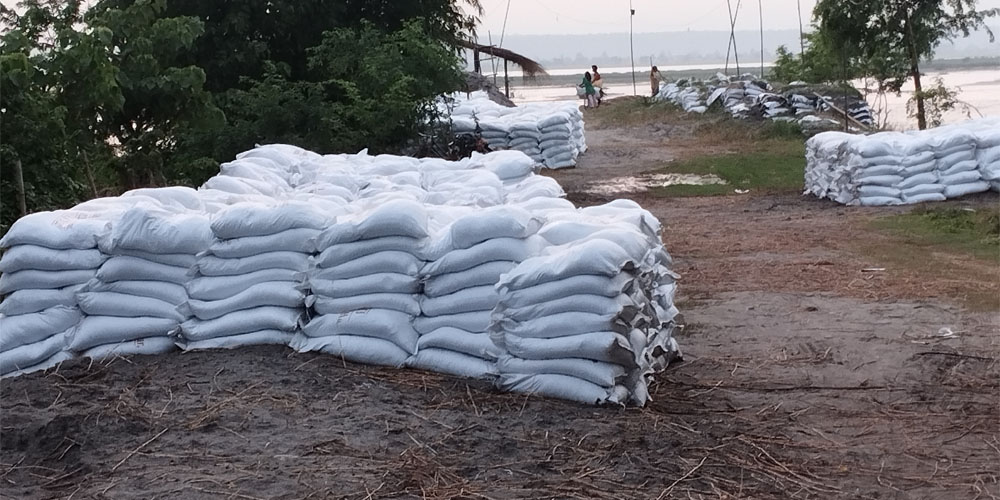- Saturday, 17 January 2026
Preparations for spur protection in Saptakoshi River
By Baburam Karki,Baraha Kshetra, June 28: With the onset of the monsoon, sacks filled with soil and sand have been kept ready to protect the eastern embankment areas of the Saptakoshi River where there is a potential danger.
The sacks filled with soil and sand have been prepared to prevent erosion at the spurs where water is building pressure.
The sacks filled with soil have been prepared at the spurs from the northern border of the Koshi Tappu Wildlife Reserve, from Dharahara Tapan to the Salbandi area.
Mohan Mandal, a local involved in the embankment maintenance of the Koshi Project's Water Resources Department, said that the department had kept sacks filled with soil at the spurs to prevent erosion in the Koshi River.
According to him, sacks filled with soil, sand, and nets had been kept ready to immediately place them in case of any erosion at the spurs under water pressure.
The sacks filled with sand have been prepared in advance to strengthen the spurs, ensuring that the water pressure is redirected towards the middle, preventing erosion.
As the water flow in Koshi has been fluctuating in recent days, sacks filled with soil have been kept ready to prevent possible erosion in many places. Indian technicians working on the protection of the eastern embankment said there should be efforts to prevent potential river damage.
Although there is currently no danger, soil and sand have been placed in nets and sacks at repair sites using porcupine, wire mesh, and other methods.
The Saptakoshi River, formed by the confluence of the Sunkoshi, Dudhkoshi, Indrawati, Tamakoshi, Arun, Tamur, and Likhu tributaries, has been eroding the spurs annually during floods. Water pressure has been notably high at spur numbers 25:25, 25:57, 26:00, 26:40, and 26:88 of the eastern embankment.
Water from the number seven spur of Chatara (Karam Khola) impacts Pulthgauda, and then strikes the nose of Tehra Haddi, resulting in pressure on the 25:25 spur of Rajabas.
Sacks have been filled and placed at seven spurs from 24:10 to 27:88 in the Rajabas area to prevent potential erosion.
Daily monitoring has been conducted from Rajabas to Salbandi on the eastern embankment. When erosion occurs at the embankment and spurs, sacks filled with sand are placed in nylon nets and immediately positioned at the eroded site.
The Water Resources Department has been working on erosion control at the spurs every year. During the monsoon, the department regularly studies the condition of the Koshi and performs maintenance work on the embankments and spurs.
The Koshi Project's Chakraghatti Sub-Division, Rajabas Sub-Division, Madhuban Sub-Division, and Kushaha Sub-Division monitor the area from the Koshi Barrage to Chatara.
What is a spur?
A spur is a structure made of stone, soil, sand, and wire mesh placed in front of the embankment, attached to it for its protection. The spur prevents the water flow from impacting the embankment by redirecting it towards the middle of the Koshi River.





-square-thumb.jpg)
-original-thumb.jpg)








